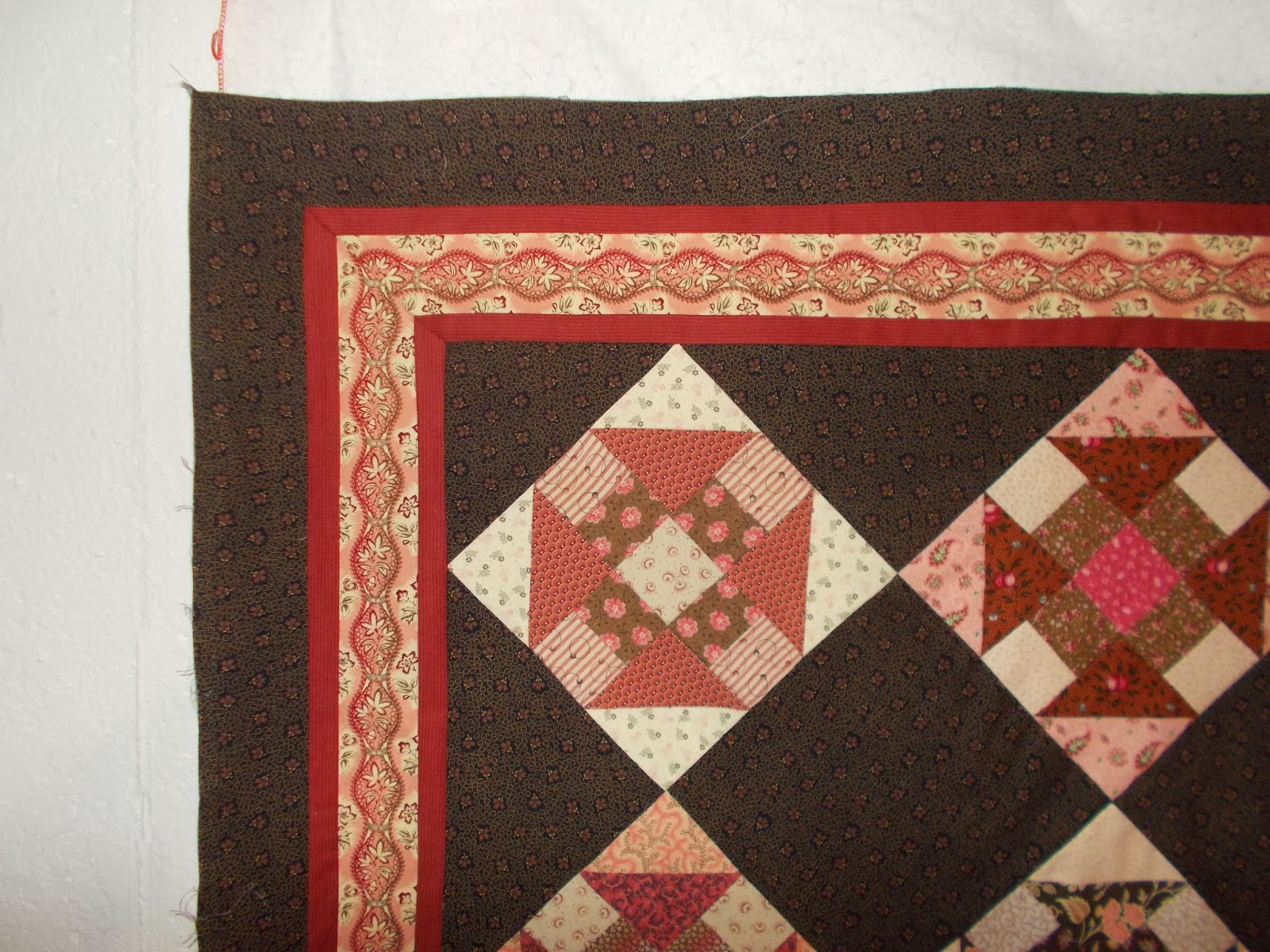Board basting. Who'd of thunk it? Certainly not me. I learned this method by watching a tutorial by Sharon Schamber on YouTube. It explains the process very well.
Following are the steps that I took. Please note there is more detailed information on Sharon's video.
1. I purchased two 1" x 3" trim board with a length five to ten inches longer than backing. Made sure they were straight, cured and/or painted. Mine were purchased at Home Depot for approximately ten bucks for the pair.
2. Back (previously pieced, starched and cut to size) was laid out face down on a flat surface which at my house is the basement floor. Top was centered on top of backing with fabric face up. No batt just yet:
3. One board is placed horizontally along the bottom edge of quilt top. I used painters tape to adhere fabric to the wood for a smooth start on wrapping the fabric on board:
5. Begin to roll up board with quilt top holding the fabric taut as you roll for approximately 12-16 inches:
6. Begin to roll up board holding backing. Again I used painters tape to adhere fabric along wood. This board was rolled up 12-16 inches to meet the first board:
7. Both boards were rolled up in tandem in increments of 12 to 16 inches. I found that the weight of the first board in keeping the back fabric weighted down thus taut:
9. Unrolled board with back (right side face down) for approximately 12-16 inches.
10. The batt was then placed on top of back. Batt is laid out flat and spread on table.
11. The board with quilt top was then placed on backing and unrolled 12-16 inches:
Just like a quilt sandwich:
- Bottom layer is the back (right side down)
- Middle layer is the batt
- Top layer is the quilt top (right side up)
12. Begin the basting process in a herringbone stitch working right to left or left to right, whatever your preference. As I basted each section, I then pulled quilt down and unrolled another 12 inches or so of the fabric on both boards. Bottom board goes underneath the batt. Top board goes above the bat. It all stays together with perhaps minor smoothing of fabric:
All three layers held together nicely with the boards. Below is a view on the last section to be basted. Note the fabric is still taut and all three layers stay together:
The outcome was one of my best basted quilts:
Now basted quilt fits nicely into my Q-Snap quilting frame and I can begin to hand quilt any section that I desire as all layers are well secured.
Other items that I found beneficial:
- extra tables pushed together to support quilt (card table, portable table and my secondhand cutting table)
- spray starched (non-aerosal) the backing fabric
- pearl cotton #8 for basting (snuggles nicely with all layers)
- good needle threader that would accommodate the pearl cotton
- thimble
- good lighting
- chair with back support and preferable one with wheels
If you are satisfied with traditional basting and never try this method, at least consider basting with #8 pearl cotton. It is smooth, easier to handle than thread, holds the layers nicely together and it still allows for fabric movement.
If this post has peaked your interest and are considering this method, here is the link once more to Sharon's basting tutorial.
Now that the basting part is over and the quilt is in the frame, I can now link up to Kathy's popular Slow Sunday Stitching as I was finally able to begin hand quilting my Civil War Era repro quilt on Sunday. Yay!






















